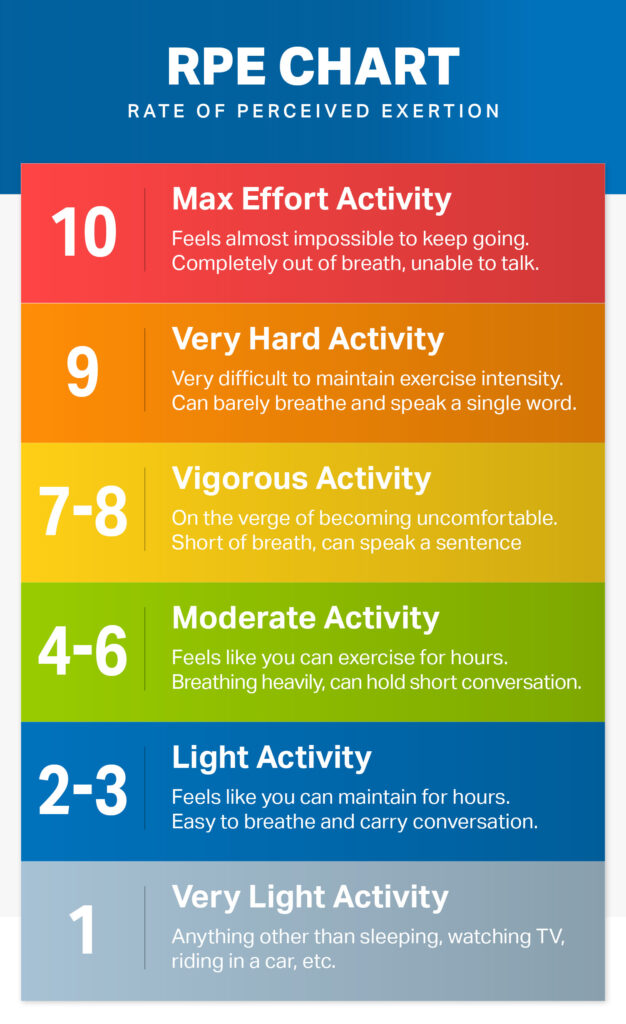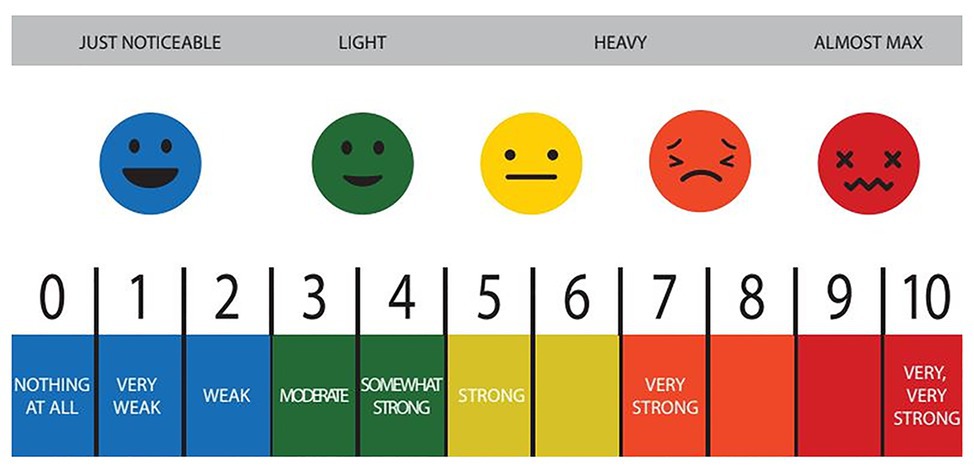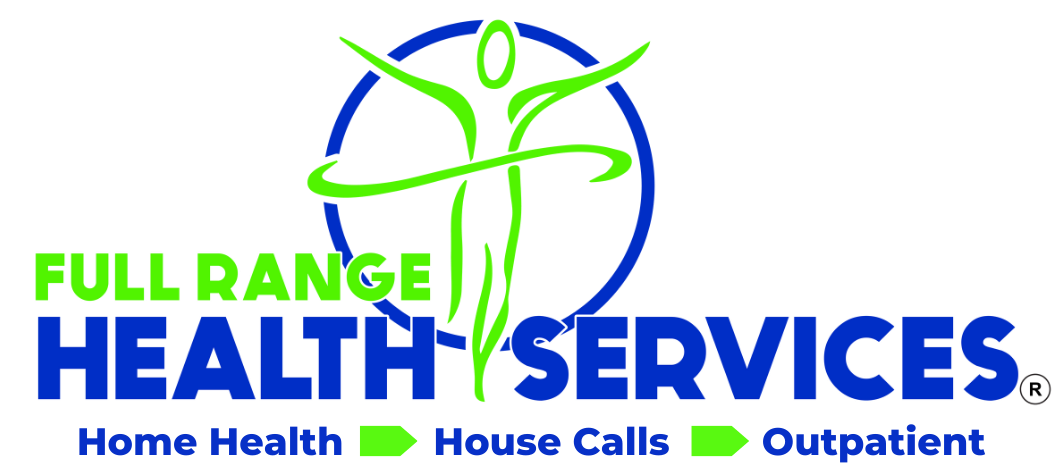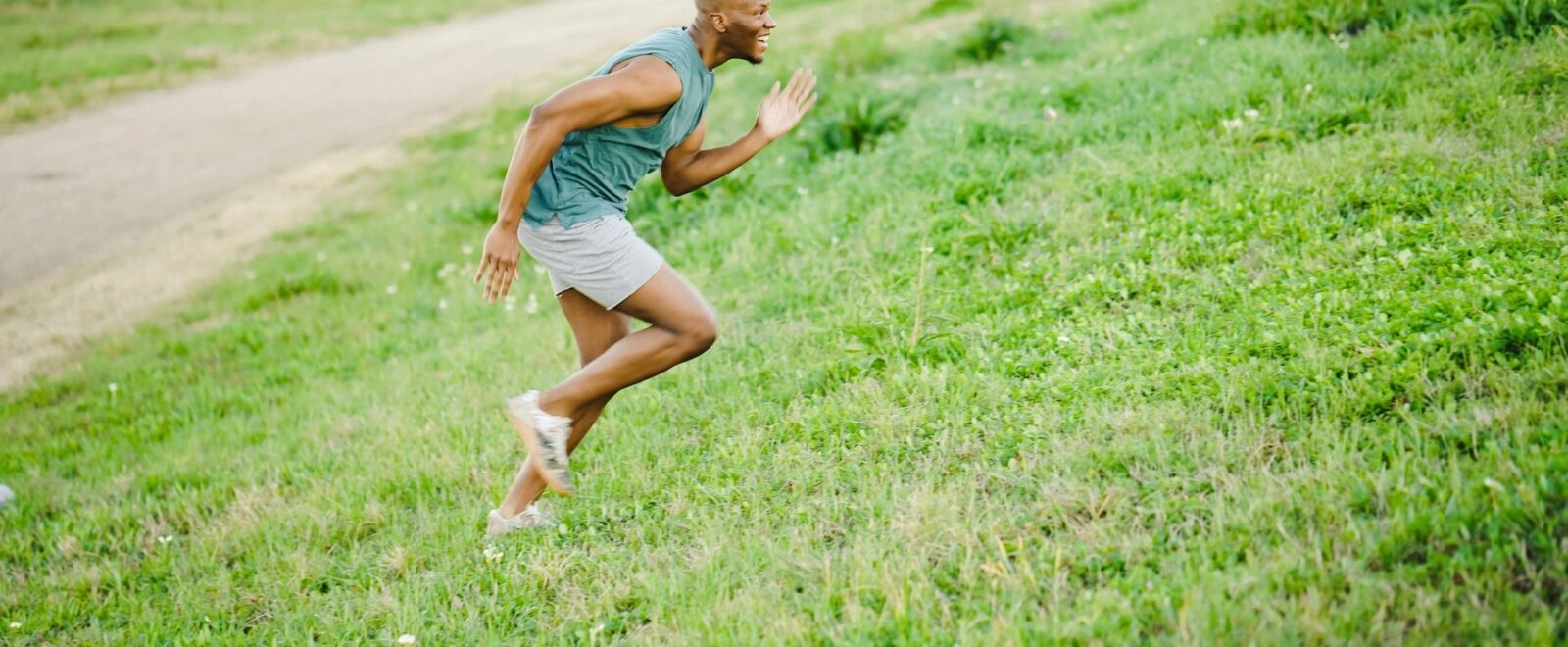By: Dr. Patrick Rutledge at Full Range PT- Drexel Hill
Whether recovering from COVID-19, pneumonia, or deconditioned from lack of activity, catching your breath, or even simply breathing may be difficult at times. For some, this may be due to weakened lungs and cardiovascular system, too much streaming and comfort foods during the pandemic, or even the daily donning of thick face masks to prevent the spread of the virus while out in public or at the workplace. Why does this matter?
Typically, when someone is meeting with their doctor or medical professional, their vitals and general health is assessed through blood pressure, heart rate, respiratory rate, and oxygen saturation of their blood. These can be quickly measured via a BP cuff, finger pulse oximeter, and visually assessing their respiratory rate. However, a quick assessment that is often under utilized is called the Rate of Perceived Exertion (RPE). The RPE, as it is commonly called, provides a snapshot of a person is feeling at a particular moment. It is often represented by a visual scale of either 1-10 (modified), or 1-20, which asks a person how they are feeling at that moment. Some examples can be seen below.


This scale is usually used for people who are on specific medications called Beta Blockers. This medication may be administered to folks who are having heart issues such as high blood pressure, irregular heart rhythm, chest pain, or history of heart attacks. The challenge with this medication is that it acts on a person's epinephrine levels, which may cause them to experience difficulty breathing and can slow down their heart rate. For this reason, assessing a person's heart rate during exercise is not an accurate representation of effort as it may be in someone that is not on these medications. Typical response to activity should include a rise in blood pressure, rise in heart rate, and likely a rise in respiratory rate.
Similarly, I have found that a person's heart rate, when they are exercising with a mask, may not match with their current level of exertion and increased rate of breathing. With this, I find myself using the RPE scale in addition to normal vital sign readings to get a better understanding of how hard my patients are working during their session. The quick visual representation makes it easy for the patient to match how they are feeling during a specific activity.
Whether you are a current patient working with your physical therapist, or just going about your normal day while wearing a mask, keep this scale in mind! If you are having difficulty catching your breath and unable to carry on a conversation while you are going about your normal day, look into other types of masks which may improve your ability to breathe. Never overlook the feelings of dizziness, lightheadedness, or shortness of breath while you are wearing your mask. These symptoms can result in passing out, falling, or much worse! Listen to the signs that your body gives you! And if you are having these symptoms, check in with your family doctor as soon as possible. If you think it is because of being out of shape, from in activity or recent illness, physical or occupational therapy may be beneficial. Need some guidance, don't hesitate to reach out at 610-241-2685. Until then, be safe out there and enjoy the Holidays with your loved ones!


